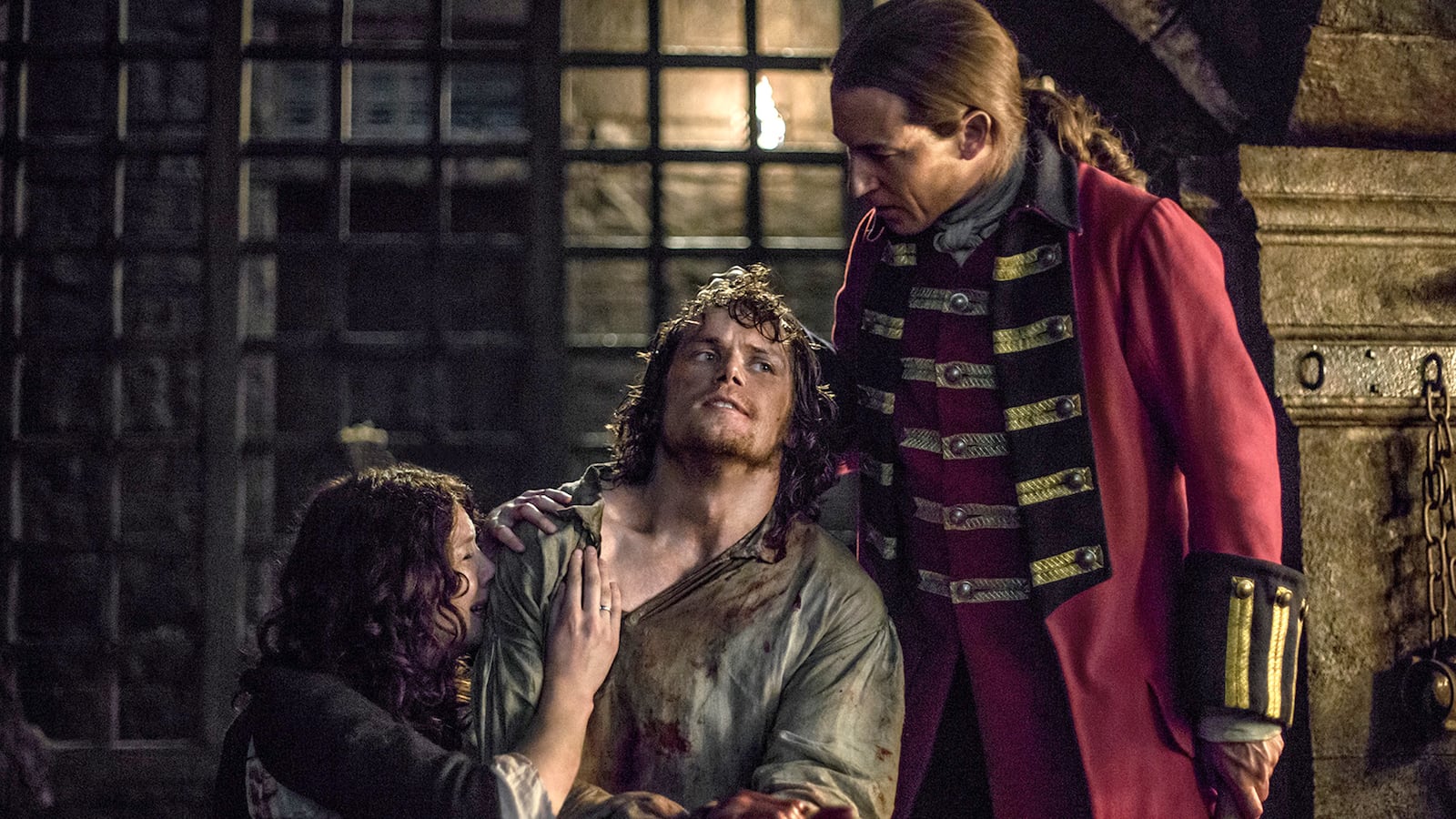TV’s “rape glut” problem is exactly what it sounds like—a barrage of dramatized, over-sexualized, potentially triggering rape plots, all coming to a television set very near you. On Law & Order: SVU, the drama of sexual assault is reconfigured and rehashed in almost every episode. While the crimes are graphically recounted, the survivors’ ongoing narratives are often pushed aside in favor of more fast-paced fare. Conversely, in lush, visually rich dramas like Games of Thrones, sexual assault is used to underline cruelty or debauchery—and to undress fetching female extras—resulting in infamously gratuitous rape scenes that would make Detective Stabler blush.
SVU and GoT have more in common than acronyms and cult followings. They also represent the two extremities of the golden age of “rape glut”: a crime procedural template that doesn’t allow for the psychological complexities of trauma and recovery, and the constant, merciless, explicit exploitation of the theme of women’s disposability in a patriarchal world—presented in the form of rape porn, as opposed to constructive critique.
Whether they’re being exploited for the male gaze or for a ratings spike, insensitive and unthorough representations of sexual assault negatively impact both survivors and couch surfers. Using rape as a blasé plotline or for a cheap thrill is an egregious insult to actual survivors. It belittles the experience of sexual assault, and fails to illustrate the long-lasting effects of trauma. In addition to obliviously bypassing a teaching opportunity, heavy-handed rape plotlines also reinforce a larger rape culture, in which violence is sexy and sex is violent.
These shows aren’t just insensitive and inaccurate; their treatment of sexual assault has the added horribleness of real gendered implications.
In a procedural like SVU, rape is so integral to the show that its ubiquity eventually becomes invisibility, and the audience is inured to the violence of the crimes and the real experiences and traumas the actors are reenacting. In GoT, it’s not only the individual assaults that are rendered forgettable—it’s often the woman herself. Nameless and powerless victims are presented as flimsy props: sex toys, war trophies, and battered wives. These barely there characters are almost exclusively female, and in the GoT universe, they are just as meaningless as the sex crimes they endure; bodies that are exploited in one scene, and forgotten and erased in the next. The Outlander Season 1 finale emerges against this particularly un-picturesque background. Based on Diana Gabaldon’s best-selling franchise, the Starz series follows the love story between Claire Randall (Caitriona Balfe), a time-traveling nurse, and Jamie Fraser (Sam Heughan), a young Scottish warrior (circa 1743). In the Sunday night finale, Claire cared for a broken Jamie, whose flashbacks revealed extremely graphic sexual assault and torture at the hands of the sadistic Frank Randall (Tobias Menzies). The story of a male protagonist’s rape is not a common plotline, making this narrative noteworthy even in the “rape glut” era. In light of Outlander’s gender reversal, is this finale a valuable addition to the “rape glut,” or is it an exception that proves and reinforces the rule? Realistically, it’s a little bit of both.
It is inarguably important to show a mainstream-ish (sorry, Starz) audience that anyone can be a victim or a survivor, regardless of appearance or gender identity. Victims of sexual assault can be wearing a suit of armor or a pair of assless chaps. The more inclusive television’s portrayals of survivors become, the less likely that real survivors will feel silenced, estranged, or erased from representations of their own stories. By shying away from stories of male victimhood, TV runs the risk of telling viewers that these narratives are actually nonexistent, reinforcing the very pesky myth that men can’t be raped. In redressing this myth, Outlander is part of the solution.

Outlander is also doing us all a favor by purposefully showing that sexual assault is a crime of power and control. While Jamie’s rape scenes are graphic and explicit, and have received some accusations of “rape porn,” they are also torture scenes. The audience is constantly reminded that Jack Randall is breaking Jamie down physically and psychologically. The rape isn’t sexy, and one could argue it isn’t even sexual; an extremely important distinction that is so often glossed over in an attempt to appease horny viewers with plot points that double as turn-ons.
Moreover, Jamie’s story is told in flashback; the framing narrative deals with his and Claire’s attempts to heal and move forward. In this way, recovery and survival are inherent to the sexual assault storyline. We follow one survivor’s process in a way that would be impossible in GoT-land, where rape plotlines are buy one get five free. While this portrayal is far from perfect, a survivor could possibly feel like an approximation of their story is being told here—not just the assault, but the days, weeks, maybe even the years afterwards.
In a recent Vulture interview, Outlander author Diana Gabaldon admitted, “I said very early on to Sam publicly that I wanted to see him raped and tortured…I wanted to see how they would handle such a controversial, emotionally draining, twisted scene that was going to be hard to watch, but so important.” Clearly, the rape scene is supposed to serve a purpose, to shed light on both the victim and the assailant—whereas in GoT, rape is never used to show the complexity of female victims. When a woman is attacked, rape is a tool to move along an episode or to create an ambience. For a man, it’s a crucial plot point that ultimately speaks to his complexity, resilience, and strength.
Through this double standard, we see how the “rape glut” is ultimately a symptom of a much larger problem—the way we present and consume women as disposable bodies. When pretty young women are raped just to get a rise out of the audience, that doesn’t just deny survivor narratives—it denies the humanity and value of all women. When watching GoT, the constant threat of rape against all women is supposed to represent a brutal and patriarchal society. But the line between fact and fiction blurs when we see how, with the exception of the narratively gratuitous rape of Sansa Stark, these stories of forced sex have been made inarguably sexy, and how nameless, almost faceless naked young women are cast both as scripted victims and as implicit turn-ons. These women often don’t have stories beyond their disturbing plotlines; just like so many young actresses who are exclusively seen as sex objects and accessories, even on shows where sexual assault doesn’t play a role.
In Outlander, the rape plotline is far from extraneous—it illustrates psyches, illuminates a love story, and ultimately strengthens a protagonist. The assault scene is painstakingly portrayed as psychological warfare, not a lurid means of spicing up an episode. Through the revelation of Jamie’s sexual assault, we are able to chip away at defensive layers to see his character more clearly. While this arc is uncommon in terms of sexual assault narratives, it’s quite common to see a male protagonist gifted with a nuanced plotline. Female characters, both survivors and non-survivors, are rarely allowed that opportunity.
In challenging the television norm of what a survivor looks like and how a victim heals, Outlander has managed to film a rape scene that doesn’t make us want to quit TV forever. Still, challenging rape culture and traditional gender tropes doesn’t begin to address the rampant misogyny that makes the “rape glut” so truly sickening in the first place.






